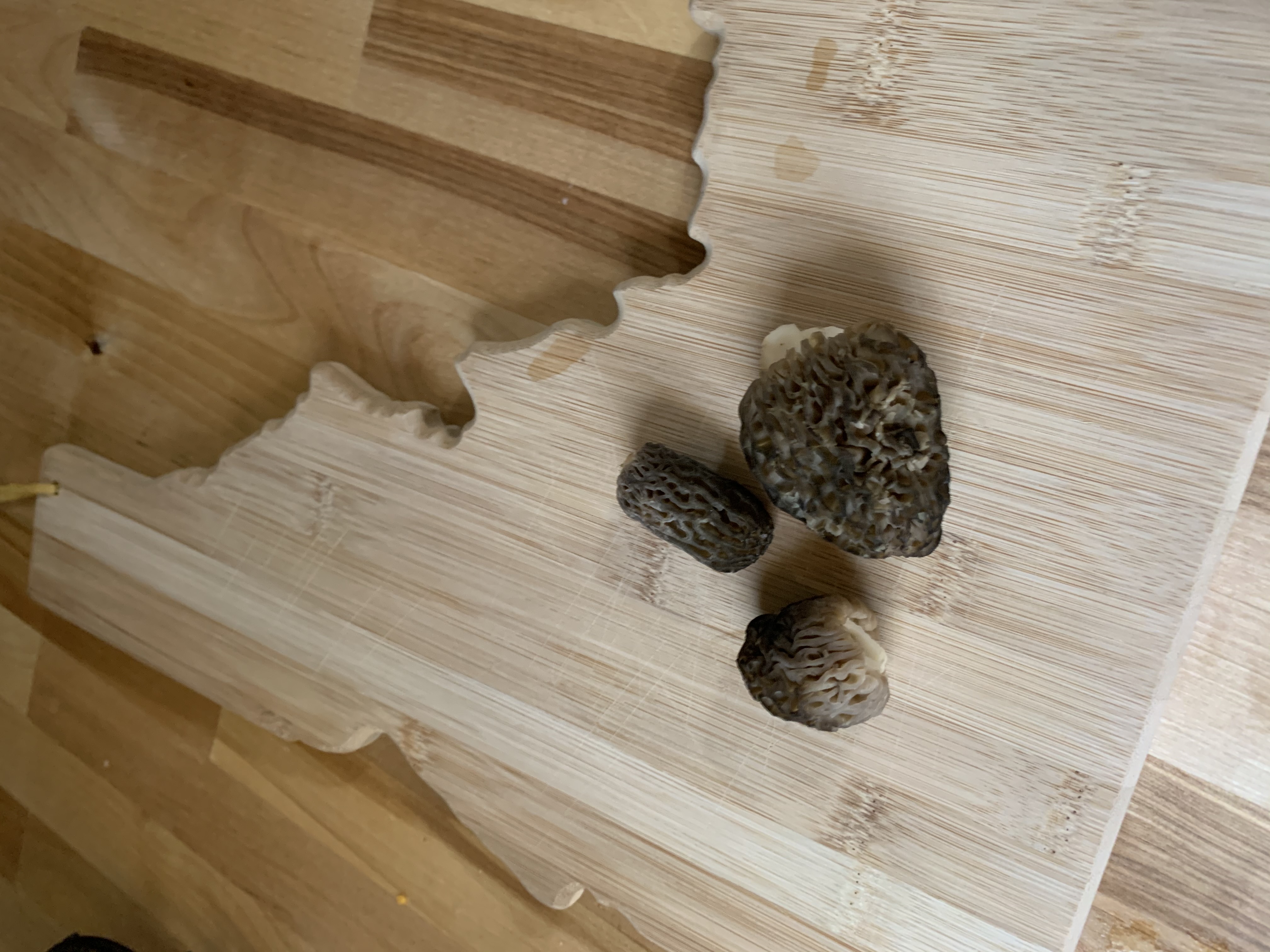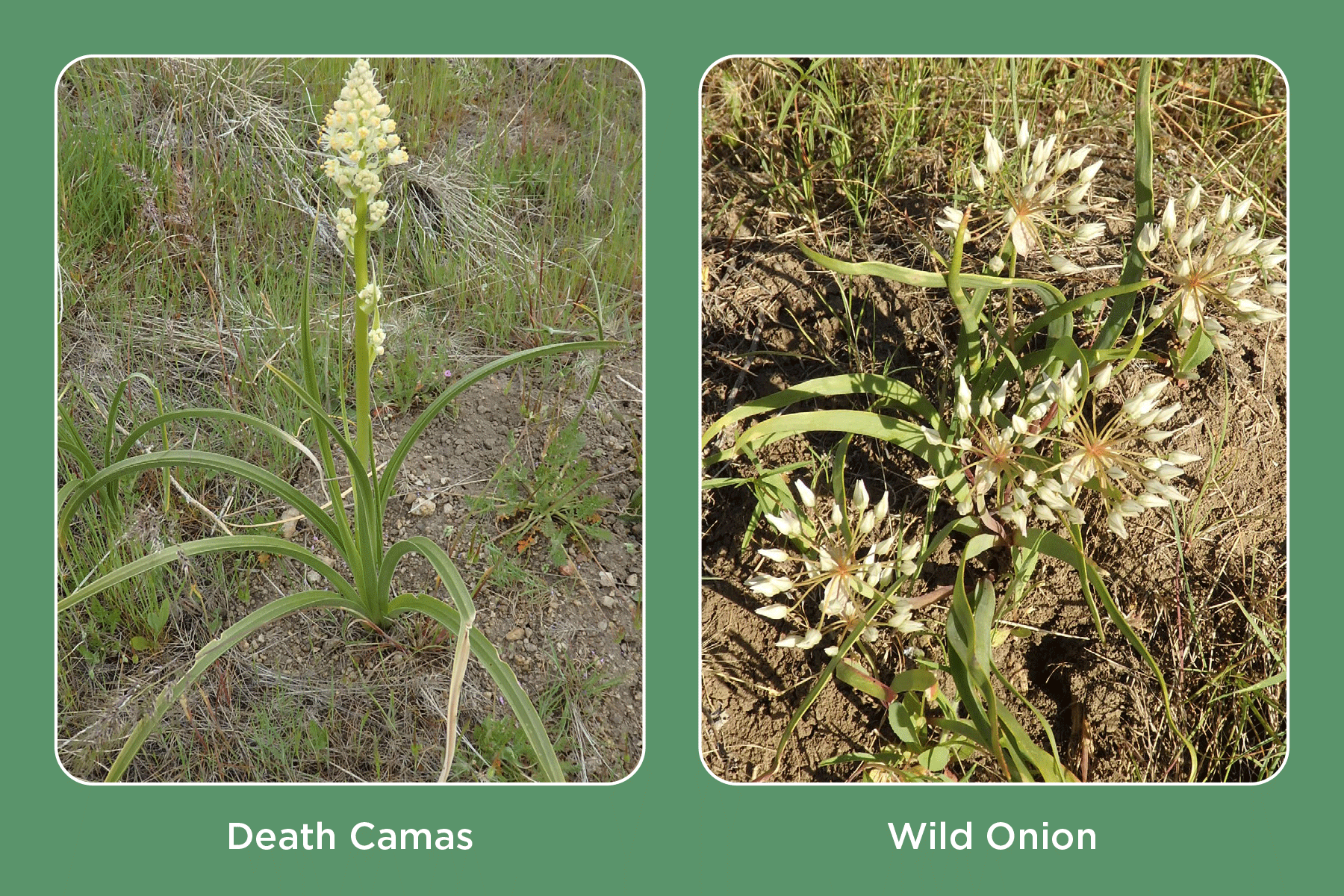Idaho is home to many tasty wild edibles, such as morels, huckleberries, hawthorn fruits, and cattail roots. Foraging is an increasingly popular activity in Idaho that often goes hand-in-hand with other outdoor spring activities, including hunting and fishing, and Fish and Game officials are reminding people that it’s something that should be done with appropriate caution.

“Plants are a critical component of wildlife habitats, and their blooms and branches add beauty to every landscape. Knowing which species are edible can be a rewarding bonus on hunting and camping trips,” said Lynn Kinter, lead botanist for Idaho Fish and Game. “But foraging can be dangerous, particularly for beginners, because misidentifying a species can have dire and sometimes deadly consequences.”
For some edible plants in Idaho, extra attention is warranted: Many have look-alikes that are not only inedible, but poisonous — sometimes potently so.
“Before sampling any wild plant, it is critical to know the poisonous plants that look like them, and be able to distinguish them with 100 percent certainty,” Kinter said.
For example, Kinter explained, a plant like the poisonous (and appropriately named) death camas looks a lot like the edible species blue camas and wild onion. To further complicate matters, all three of these species can frequently be found in close proximity.

As one group of hunters in western Idaho recently learned, it’s an easy mistake to make, and a scary one. Zach Bowhay, a Moore resident, was bear hunting with his family in early May when they found what they believed was a patch of wild onions — a popular food source for bears in the spring. According to Bowhay, the odor in the area smelled strongly of onions, and the plants they found in the area looked the part.
“Several in our group thought these were wild onions. It had been years since I had dug wild onions and I thought this is what we had found as well,” Bowhay said.
Bowhay, his son and his wife sampled what they believed were wild onions. He and his wife immediately spit them out after tasting them, but his son chewed and swallowed about an inch long piece of the plant, Bowhay said. A couple hours later, his son was vomiting and feeling very ill.
Fortunately, Bowhay’s son recovered and is doing fine, but Bowhay wants get the word out about these poisonous plants.
“They say that eating two bulbs from this plant will kill an adult. We are very lucky that no bulbs were dug up, just the stems. We could have easily lost our child over something very innocent,” Bowhay said.
Indeed, the toxin in in death camas is a neurotoxic steroidal alkaloid, which causes neurological effects and digestive tract irritation and just two bulbs can be fatal for humans, Kinter confirmed. She said that it is possible that the death camas was growing in the midst of wild onions, which would explain the odor in the general area, and added that the two species are nearly indistinguishable to the untrained eye in the spring, when they lack some of their most apparent identifying features.
“Death camas is often confused with wild onion, which is exactly what happened here,” Kinter said. “And in this case, we’re talking about someone who probably had more knowledge about edible wild plants than an average person.”
Death camas isn’t the only example of a poisonous look-alike: Poison hemlock and water hemlock are extremely toxic, and resemble edible members of the carrot family, including yampa and biscuitroot. To the untrained eye, the poisonous red fruits of nightshade and baneberry look like the delicious fruits of red huckleberry and wax currant.
For some species, only certain parts are edible, or they may be edible only when prepared in the correct way. For example, some common garden plants, like potatoes, have toxic leaves. The bulbs of blue camas can cause indigestion if not cooked for at least a day. Morels are toxic if eaten raw, but edible (and delicious) if cooked thoroughly.
As a simple rule, before eating any wild plants or mushrooms, a person should both identify the plant with 100 percent certainty and be 100 percent certain that it is edible. As these look-alike examples demonstrate, that’s not always as simple as it seems. According to Kinter, it’s best to learn from an expert, and even the experts refer to reputable field guides on toxic and edible plants. These guides also note other interesting uses, such as cattails and willows for baskets. Identifying and using wild plants is a rewarding activity, when done with appropriate caution.
Here are some helpful edible plant books recommended by Kinter:
- Handbook of Edible and Poisonous Plants of Western North America, by Brian Elliott (2009)
- Foraging the Mountain West, by Thomas Elpel and Kris Reed (2014)
- Edible and Medicinal Plants of the Rockies, by Linda Kershaw (2000)
- Wild Edible and Useful Plants of Idaho, by Ray Vizgirdas (2017)

